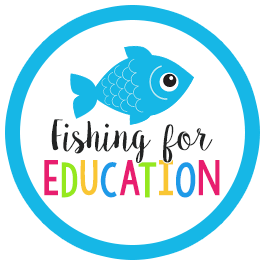Chantelle from Miss Jacobs' Little Learners here! :)
I hope you are all well and are enjoying working with your new Grade and new teams.
Now that all the 'Getting to Know You' activities, setting up classroom protocols and dreaded assessment tasks are out of the way, its time to get stuck into some TEACHING!!! YAY!!!
Today, I wanted to share with you a few really fun and engaging lesson ideas that you may like to incorporate into your upcoming planners - A bit of inspiration for you because lets face it - it's hard work coming up with authentic lessons and activities that will keep your students motivated whilst learning.
I LOVE that social media allows us to share these fabulous ideas. with one another. We are not on our own anymore - we have sooo much support now!! Its FABULOUS!
SKIP COUNTING LESSON IDEAS
Anyone that knows me personally (or has taught next door to me :P) will know how much I just love to incorporate lots of music, singing and interaction into my lessons. Most of the time, I will start off my lessons with a little song or clip to get the kids into the topic.
Here are a few fantastic clips that I use regularly at the beginning of my skip counting lessons. You can find them on Youtube - or if you don't have access to Youtube at school, you can always use Keepvid to download the clip at home and save it to your computer as a .mp4 clip.
Another great interactive tool to use if you have an IWB is Splat Square by Primary Games
If you can get your hands on a copy of this book, I highly recommend it for both counting by 10s. It is also fantastic for an introduction to Addition.
For counting by 10s, after reading the book children can make their own crabs and count how many legs there are altogether. I sat my grade in a circle with their crabs and we went around and counted by 10s. Then I created a cute display for our Numeracy Wall :)
Click on the clips to be taken directly to the link.
Another great interactive tool to use if you have an IWB is Splat Square by Primary Games
Children can come up to the IWB and click on the 100 square to create a skip counting pattern.
TIP: For extra fun and giggles, make sure your sound is ON... :)
Crab Lesson: Counting by 10s
If you can get your hands on a copy of this book, I highly recommend it for both counting by 10s. It is also fantastic for an introduction to Addition.
For counting by 10s, after reading the book children can make their own crabs and count how many legs there are altogether. I sat my grade in a circle with their crabs and we went around and counted by 10s. Then I created a cute display for our Numeracy Wall :)
If you would like to make these crabs with your grade, you can find the FREE template here:
What activities have you used to teach skip counting in the early years? We'd love it if you posted some ideas or photos of things you have implemented in your classroom in the comment section below.


































